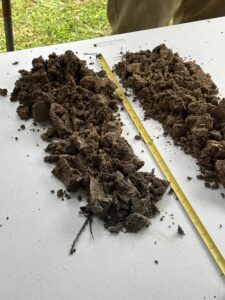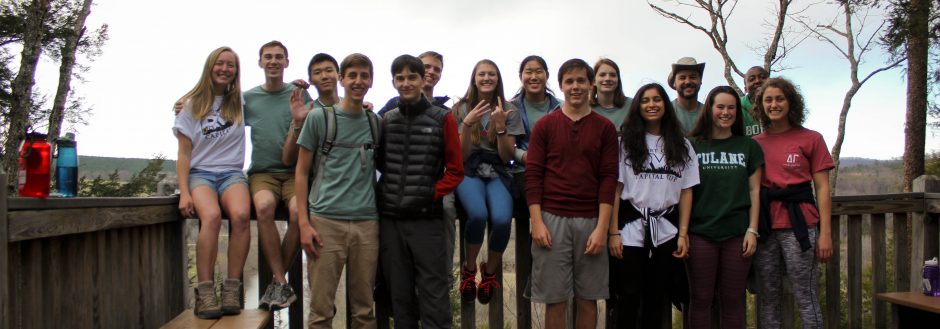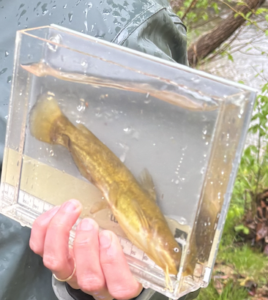Since starting college here, I have visited the campus eco-corridor multiple times, and the experience has been slightly different each time. In my freshman and sophomore years, I enjoyed walking and jogging on the trail with my friends to breathe fresh air and refresh our minds, so the eco-corridor was an excellent community recreational space. During other visits, I accompanied my classes. On a spring afternoon in my sophomore year, I participated in a small group discussion about climate change with two classmates from my Sustainability 101 class at the tables near the park entrance. However, it was not until this semester that I learned about the multiple benefits of parks and green spaces, like the eco-corridor, beyond their recreational value.
In my first observation log, I discussed the idea of having a tour guide present the history of the space of the eco-corridor as a part of a prosperous trading town called Westham/Beverley in the 18th century, as visitors walk in the park and feel the ripple of the Little Westham Creek. Indeed, green spaces like the eco-corridor contain exciting stories of history that are worth sharing with the community. The eco-corridor not only tells the story of its evolution from a trading town to a Richmond suburb but also highlights the conservation efforts by the UR faculty and students with partnerships to establish this park, restore the health of the stream, renovate the recreational trail, remove invasive species, and manage stormwater runoff. These restoration efforts have shaped the eco-corridor as a multi-functional ecosystem that provides habitats for diverse species, offers recreational value, and serves as an outdoor learning hub for students and our community.
On April 11, our class visited the eco-corridor to learn about its ecology. The speakers at the stations taught me many fun facts about the soil, macroinvertebrates, and native fish species at the park. At the first station, I learned to distinguish between the wetland soil near the creek and the upland soil. Wetland soil is characterized by a bluish-grey surface, an orange interior, and a sticky texture and contains more organic matter than the upland soil (Figure 1). From the fish station, the speaker showed us some native fish species that indicate the healthy status of the stream, such as the brown bullhead, a native catfish in the James River watershed (Figure 2). We had a fun activity at the macroinvertebrate station: picking some of these species using tweezers and examining them under the microscope. We also saw a red-tailed hawk seeking prey on a tree near the tent, which added additional fun to our learning experience (Figure 3).
My experiences at the eco-corridor tell me the park is a shared green space for recreation and education. Based on the discussion in this journal, I genuinely believe that we can better showcase the immense value of the eco-corridor to our community members by presenting the history and restoration efforts happening in this space and organizing more hands-on learning activities that enable members to learn about the ecosystem.

Figure 1: The soil station at the eco-corridor. The soil on the left is wetland soil, and the one on the right is upland soil.


